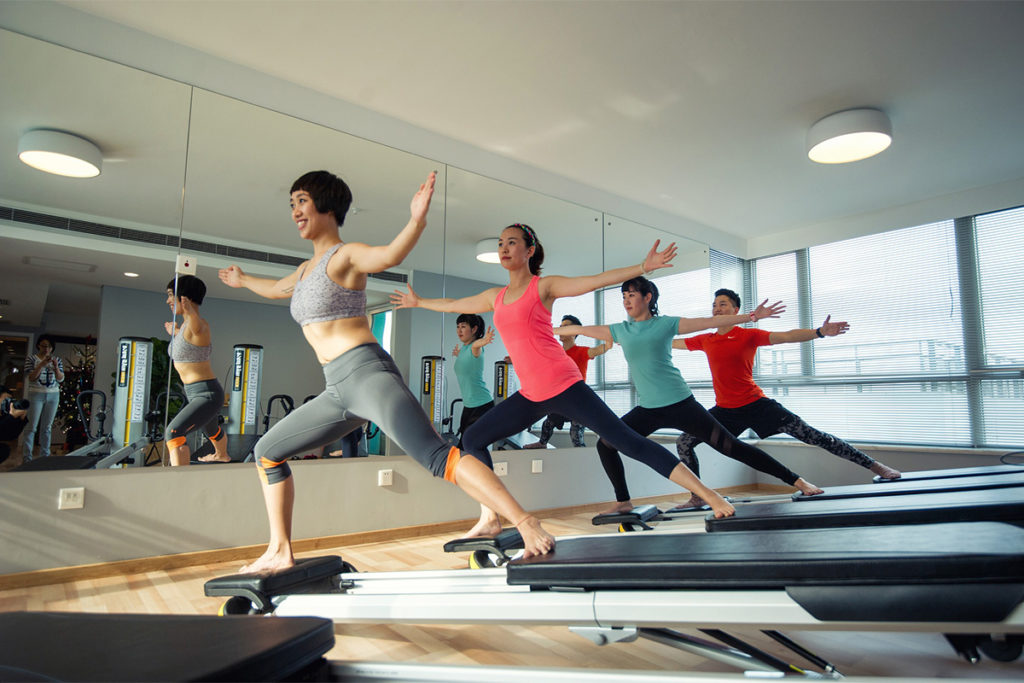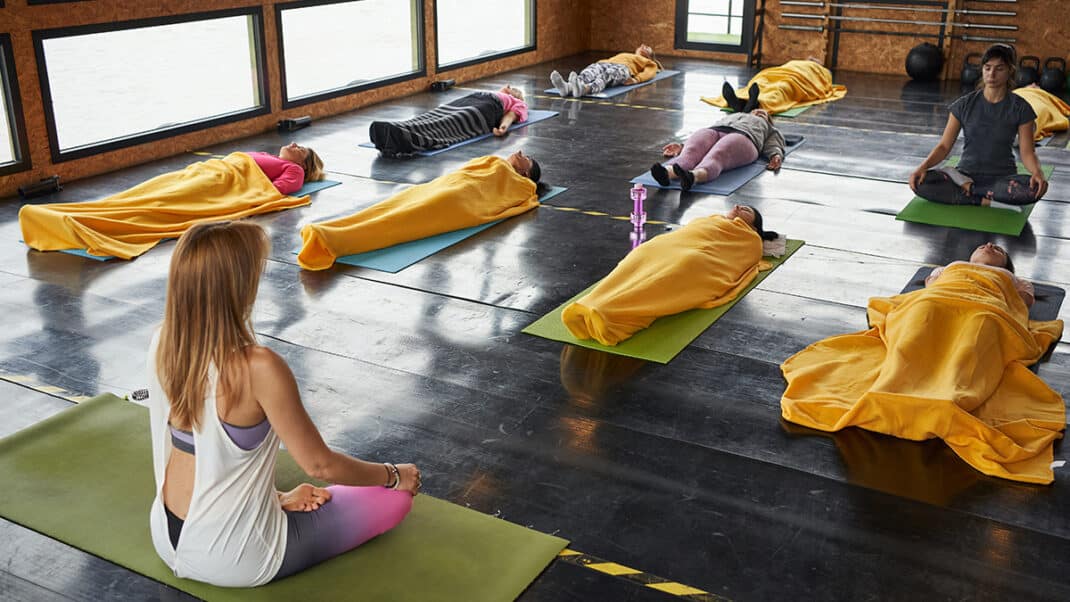Running for Health: A Brief Review
The Health Benefits of Exercise: Historically Thinking to the Present

In the 5th century BC, the physician Hippocrates stated: “All parts of the body, if used in moderation and exercised in labors to which each is accustomed, become thereby healthy and well developed and age slowly; but if they are unused and left idle, they become liable to disease, defective in growth and age quickly.” (Ruegsegger and Booth, 2018). Ruegsegger and Booth continue, stating that physical inactivity can lead to worsening, chronic health conditions including, type 2 diabetes, obesity, breast cancer, stroke, colon cancer, congestive heart failure, coronary heart disease, gallbladder diseases, osteoporosis, hypertension, rheumatoid arthritis, metabolic syndrome, ovarian cancer, endometrial cancer, cognitive dysfunction, depression, anxiety and more. As fitness professionals, we are quite aware that exercise is a powerful tool to fight off these chronic conditions. Yet, one challenge we continually face is how to attract more potential clients to begin an exercise program. Interestingly, starting a running program with new clients may be a new, additional direction for fitness professionals. This research column will explore the current popularity of running, running for cardiorespiratory fitness, running for weight management, running for bone health and running for mental health as well as provide suggestions for implementing these concepts in your training.
Starting a Running Program
First, building a strong online and offline presence is essential for growing a running group and attracting new clients. Creating a social media group on platforms like Facebook, Instagram, or Strava allows for regular engagement through running tips, group updates, client success stories, short training videos, and motivational posts, while the use of hashtags like #RunWith[YourName] or #CityNameRunningClub can expand visibility. Leveraging local online communities, such as Facebook groups and Nextdoor, and connecting with fitness bloggers or influencers can further increase exposure. Developing a simple website or landing page with a sign-up form, schedule, testimonials, and FAQs, along with a free eBook like “Beginner’s Guide to Running,” can help capture potential clients’ emails.
Offline strategies are equally important, including partnerships with local businesses like running stores for discounts, cafés for post-run gatherings, and gyms or studios for referrals. Flyers and posters placed in community centers, libraries, and grocery stores can attract more participants, while hosting a free launch event, such as a “Run & Brunch” or a fun 2-mile jog with a short running form clinic, can introduce new runners to the group. To retain and convert clients, challenges like “Run 50 Miles in a Month” with small prizes, referral discounts such as “Bring a friend, and both get 20% off personal training,” and personalized engagement through tracking members’ progress and sending motivation emails with training tips can help build loyalty. Transitioning to paid services by offering personal training packages or creating a VIP running group with exclusive coaching for a monthly fee ensures long-term sustainability while keeping participants engaged and motivated.
Once you’ve decided which approach you’d like to use, tracking attendance and gathering feedback from members is essential for maintaining engagement and improving the running group experience. Adjusting meeting times based on participant availability can help accommodate more members and increase consistency. Expanding into additional services, such as running-specific strength training or recovery classes, can further support runners in improving performance, preventing injuries, and enhancing overall fitness, making the group more valuable and appealing to a wider audience.

Running Popularity is Surging
According to the Running Industry Alliance, running popularity is up 39% from 2023. The data suggests that this surge in popularity is being fueled by the Gen Z population, people born between 1997 and 2012. They are also known as “zoomers” or “post-millennials.” This new group of runners appears to enjoy doing challenges, from 5K races up to half marathons. These new runners are also sticking to their programs. Running is an accessible form of exercise for most people, requiring limited skills and a relatively small financial investment (i.e., running shoes and workout gear). The Running Industry Alliance reports the camaraderie and support between runners is hugely motivational, which is a main factor positively influencing exercise adherence.
Starting a 5k training group is a great way to increase client participation and give your clients the benefits of running. Running a 5K, especially with friends, offers numerous mental health benefits that go beyond physical fitness. It releases endorphins, the “feel-good” hormones, which help reduce stress and anxiety while regulating cortisol levels, making it an effective stress management tool. A comfortable-paced 5K can leave runners feeling refreshed rather than drained. The social aspect of running strengthens friendships through shared goals, accountability, and the joy of celebrating achievements together, fostering a sense of connection. Additionally, completing a 5K builds self-efficacy, reinforcing the belief in one’s ability to achieve goals, while overcoming training challenges strengthens resilience and mental toughness. Running has been shown to reduce symptoms of anxiety and depression by increasing vitamin D levels through outdoor exposure and promoting mindfulness through its rhythmic nature, helping to calm racing thoughts. It also enhances cognitive function by improving focus, memory, and problem-solving skills, while the support of a running community fosters positive reinforcement.
Training for a 5K provides a sense of purpose, adding structure and excitement to workouts, which helps prevent boredom and burnout. Running instills perseverance by teaching individuals to push past discomfort, with the runner’s high contributing to an overall positive mindset and a boost in self-esteem upon crossing the finish line. Finally, running outdoors fosters gratitude and mindfulness by encouraging appreciation of nature and present-moment awareness, making the experience more joyful and fulfilling. Through its combination of mental, emotional, and social benefits, running a 5K is a powerful tool for enhancing overall well-being.
Running for Cardiorespiratory Fitness
Endurance exercise such as running is known to improve cardiorespiratory fitness via improving VO2max (i.e., maximal aerobic capacity), increasing cardiac output (i.e., heart rate times stroke volume), improvement of oxygen diffusion from blood to muscle, and increased efficiency of ATP production (Ruegsegger and Booth, 2018). A major reason for the increase in VO2max is the increase in cardiac output, which is improved as endurance training leads to greater blood volume and functional capacity of the heart. This means that the heart will take up more blood, called preload, resulting in greater pumping capacity, referred to as stroke volume (Ruegsegger and Booth, 2018). This is beneficial for healthy individuals and athletes. It means that they can exercise at a lower energy cost to the body as heart rate does not have to increase as high to run at the same intensity. The increased VO2 max is important for less healthy or sedentary individuals in the prevention or treatment of chronic disease (Ruegsegger and Booth, 2018). Studies have found that just a 1 MET increase in VO2max can increase survival rates by 12% in individuals with cardiovascular disease (Ruegsegger and Booth, 2018). A MET is defined as 1 kcal/kg/hour and is roughly equivalent to the energy cost of sitting quietly.
Establish a Baseline
Before increasing running intensity with your clients, it is important to have your clients consult a healthcare professional, especially if they have underlying health conditions or have been inactive for an extended period. Consider whether they are able to jog continuously for 10–20 minutes, as this serves as a baseline for endurance. Teach them to pay attention to their breathing control during runs; excessive shortness of breath may indicate the need for a more gradual progression. Additionally, monitoring resting heart rates can provide insight into cardiovascular fitness, as a lower resting heart rate over time typically signals improved cardiorespiratory efficiency. Prioritizing safety and seeking medical guidance when necessary can help prevent injury and ensure a sustainable and effective running routine.
Key Tips for Success
✔ Progress Gradually: Increase mileage or intensity by no more than 10% per week.
✔ Focus on Breathing: Try nasal breathing or inhale for 3 steps, exhale for 2 steps.
✔ Monitor Heart Rate: Stay in 70–85% of max HR for endurance building.
✔ Strength Training: Incorporate leg and core exercises for better efficiency.
✔ Rest & Recovery: Take at least 1–2 rest days per week to allow adaptation.
How Long Until You See Results?
• 2–3 weeks: Improved breathing & easier runs.
• 4–6 weeks: Noticeable endurance gains.
• 8+ weeks: Significant boost in speed, lung capacity & overall fitness.

Running for Weight Management
Physical inactivity is a major risk factor for becoming overweight or obese and these in turn are risk factors for several chronic diseases, as well as impacting on quality of life and the ease of completing daily tasks. The percentage of populations being overweight/obese has been increasing and this is associated with the morbidity and mortality of many chronic illnesses (Tian and Meng 2019). Studies have found that participation in running regularly can mitigate weight gain from poor diet, reduce effects of genetics on development of obesity and decrease body mass index (BMI) and waist circumference (Lavie et al., 2015). Research has shown that participants who met the guidelines for weekly exercise (150 minutes of moderate intensity) had a significant reduction in risk of inherited obesity and had adiposity levels less related to their parents than those who did not meet the requirements (Lavie et al., 2015). It has also been found that running is much better than walking for weight loss, with a study finding that those that participate in running have lower body fat percentage, reduced BMI, and lower weight than those who walk for exercise (Lavie et al, 2015). Ho et al., (2012) found that 12 weeks of aerobic training combined with resistance training led to decreases in body weight, BMI and body fat percentage. Therefore, combining running with strength training may also be a viable option for clients who seek more variety in training and potentially greater weight management outcomes.
For effective weight loss through running, it is important to incorporate a variety of running workouts, including easy runs, intervals, long runs, and sprints, to maximize calorie burn and improve overall fitness. Strength training should also be included to build muscle, enhance metabolism, and prevent injuries. Consistency is key, with a goal of running four to five times per week to establish a sustainable routine. Nutrition plays a crucial role in weight loss, and maintaining a calorie deficit without extreme restrictions ensures steady progress while supporting energy levels for training. Tracking progress through a smartwatch or fitness app, such as Strava or MyFitnessPal, can help monitor performance, stay accountable, and make necessary adjustments to optimize results.
Breakdown of Running Workouts
- Interval Sprints (HIIT for Fat Burn)
- Burns calories during and after the workout (EPOC effect).
- Sprint 30 seconds, walk 1 minute, repeat 8–12 times.
- Example:
- Warm-up: 5 min easy jog
- Sprint 30 sec at 90% effort
- Walk/jog 1 min for recovery
- Repeat for 20–25 miN
- Cool down 5 min walk
- Example:
- Steady-State Runs (Fat-Burning Zone)
- Increases overall calorie burn and fat oxidation.
- Run at a moderate pace for 30–45 minutes.
- Effort Level: 60–70% max HR (should be able to hold a conversation).
- Tempo Runs (Metabolic Boost)
- Pushes the body to burn fat more efficiently.
- Run 20–30 min at a “comfortably hard” pace (80–85% effort).
- Example:
- 10 min easy jog
- 20 min at a challenging pace
- 5 min cool-down jog
- Example:
- Long Runs (Calorie Burn & Fat Adaptation)
- Improves endurance, helps body use fat as fuel.
- Run at a slow and steady pace for 45–60 min.
- Tip: Add short bursts of speed in the last 10 minutes to keep the metabolism high.
Running for Bone Health
Exercise stimulates the bone remodeling process and is known to be important in preserving bone mass and health over an individual’s lifespan. It is especially important in children and young adults during development to ensure bone mass is increased. Later in life, as adults and older, exercise can help to prevent or slow the loss of bone mass. Running stimulates the bone remodeling process in order for bones to adapt and be able to handle the increased bodily stress (Cvetko et al, 2022). This adaptive response involves bone resorption (the breakdown of bone) and formation (building the bone back up). Bone formation depends on the level of load put through the body and the frequency of exercise. This is where running is important as it puts a significant load through the body. Most research has found that resistance exercise also has impressive benefits for stimulating osteogenic (i.e., formation of bone) processes. Once again, this suggests that combining running and resistance training for clients is a health promotion combination.
Bone health is important in the prevention of fractures, especially in the elderly population, as well preventing osteoporosis, especially in women. It is worthy to improve bone density from a young age as bone mass usually peaks around 30 years of age (Cvetko et al, 2022). Participation in regular exercise such as running, which loads the bones and stimulates increases in bone density can help to reach a greater peak bone mass.
Safely incorporating running into a fitness routine for active aging adults can significantly improve bone density, cardiovascular health, and overall mobility. However, because bone density naturally decreases with age, a structured and gradual approach is essential to prevent injury while still gaining the benefits of weight-bearing exercise.
Before starting, it is important to assess bone health and joint condition with a healthcare provider, choose low-impact surfaces like grass or tracks to reduce stress on joints, and begin with a walking-based approach to allow for adaptation. Strength training should be prioritized to support bone health and joint stability, and wearing cushioned running shoes with proper arch support can help absorb impact. A safe running progression should begin with a walk-to-run approach over the first six weeks, gradually increasing running intervals while maintaining a conversational pace, incorporating warm-ups, and ending with stretching. Strength training, performed two to three times per week, is crucial for maintaining bone density and should include exercises such as squats, lunges, calf raises, deadlifts, and upper-body work like push-ups or chest presses. As running endurance improves, intensity can be gradually increased over weeks seven to twelve by extending run durations, incorporating gentle hills for additional bone stress adaptation, and adding short speed bursts to improve overall bone and muscle response.
Nutritional support is also key for bone health, with a focus on calcium-rich foods such as dairy and leafy greens, adequate vitamin D from sunlight or supplements, sufficient protein intake for muscle maintenance, and minerals like magnesium and vitamin K to aid bone mineralization. To prevent injury and ensure long-term success, runners should incorporate rest days, listen to their bodies, stay hydrated, and maintain proper running form with an upright posture, core engagement, and short, efficient strides. By progressing gradually, combining strength training, and ensuring proper nutrition and recovery, running can be a safe and effective way for aging adults to maintain bone density, enhance mobility, and support overall well-being.

Running for Mental Health and Cognition
It is notable to highlight that exercise, including running, improves cognitive function and stimulates learning and memory (Ruegsegger and Booth, 2018). This occurs through the release of factors such as brain-derived neurotrophic factor (BDNF) which leads to neuronal development and helps with synaptic plasticity (improved connections between neurons) as well as skeletal muscle activation of AMP-activated protein kinase (AMPK), a protein which helps enhance learning and memory processes in the hippocampus (of the brain) (Ruegsegger and Booth, 2018). The brain is highly complex, so at this time it is not fully understood how exercise helps to regulate mood and treat depression. One suggestion is that exercise leads to an increase in the release of neurotransmitters such as dopamine, glutamate, norepinephrine and serotonin which are involved in mood and feeling happy (Ruegsegger and Booth, 2018).
Running Training Guidelines
Current health guidelines suggest 150 minutes a week of moderate exercise or 75 minutes of vigorous exercise per week be performed to improve health outcomes and multiple studies have found this level of exercise to be sufficient to achieve the health benefits discussed above (Lavie et al, 2015). Running is considered a vigorous activity (Lavie et al., 2015) and therefore participation in 75 minutes of running per week is sufficient to observe health benefits. Running is an uncomplicated physical activity which requires minor skill levels to participate in and can be helpful for those with limited time as you do not have to run for a long period of time to achieve some health benefits. For example, you would only have to run 15 minutes, five days a week to meet the recommended levels of physical activity to achieve modest health benefits. For those who want to attain greater health and reduction in chronic disease risk factors, more training would be required. Spending more time running and with more specific programs that involve interval training and endurance runs would be critical for anyone with athletic aspirations to maximize their improvements in cardiac output and VO2max, key predictors of endurance performance. Alas, everyone responds differently to training. Therefore, fitness professionals need to individualize the training program for each client based on specific goals and client adaptations. For clients who like to mix up their training, a combination of running training and resistance exercise provides a lot of variety and a means to achieve many health benefits.

Conclusion
Given its whole-body health-promoting benefits, fitness professionals may wish to increase their client base with the introduction of running programs in their practice. As with any exercise program, start slowly and gradually increase the distance and intensity of exercise. Help your clients develop achievable goals and encourage them to prioritize rest and recovery. And yes, all of the research suggests that combing running with strength training offers even more health benefits. Help your clients find the best routine that fits their lifestyle and keep motivating them to achieve. ‘We are off…catch us if you can.’
References
Running Industry Alliance. Accesses March 2025.
Cvetko, E.D, Nesic,N, A Matic, A. et al. (2022). Effects of 8-week increment aerobic exercise program on bone metabolism and body composition in young non-athletes. European Journal of Applied Physiology, 122(4): 1019-1034.
Ho, S.S., Dhaliwal, S.S., Hills, A.P. et al. (2012).The effect of 12 weeks of aerobic, resistance or combination exercise training on cardiovascular risk factors in the overweight and obese in a randomized trial. BMC Public Health, 12:704, 1-10.
Lavie, C.J., Lee, D., Sui, X. et al. (2015). Effects of running on chronic diseases and cardiovascular and all-cause mortality. Mayo Clinical Proceedings. 90(11): 1541-1552.
Ruegsegger, G.N. and F.W. Booth (2018) Health benefits of exercise. Cold Spring Harbor Laboratory Press. doi: 10.1101/cshperspect.a029694, 1-15
Tian, D. and J. Meng, (2019). Exercise for prevention and relief of cardiovascular disease: Prognoses, mechanisms, and approaches. Oxidative Medicine and Cellular Longevity. DOI:10.1155/2019/3756750, 1-11.
Len Kravitz, PhD
Len Kravitz, PhD is a professor and program coordinator of exercise science at the University of New Mexico where he recently received the Presidential Award of Distinction and the Outstanding Teacher of the Year award. In addition to being a 2016 inductee into the National Fitness Hall of Fame, Dr. Kravitz was awarded the Fitness Educator of the Year by the American Council on Exercise. Just recently, ACSM honored him with writing the 'Paper of the Year' for the ACSM Health and Fitness Journal.






